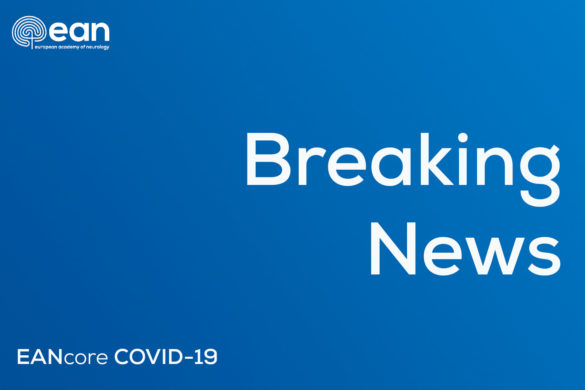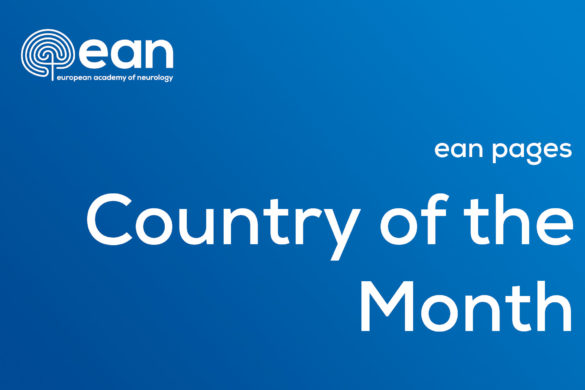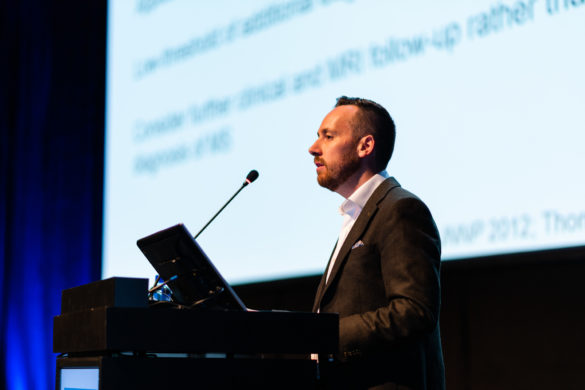by Viktoria Papp
Each month the eanNews editorial team reviews the scientific press for recently published papers of outstanding interest to neurologists. Below we present our selection for September 2024.
1) Cognitive Motor Dissociation in Disorders of Consciousness (N Engl J Med)
This international multicentre prospective cohort study provides essential data on the brain function of adults with impaired consciousness due to severe brain injury. The authors investigated the so-called cognitive motor dissociation, defined as a condition when a patient is unresponsive to commands but may conduct cognitive tasks as a sign of awareness detectable by functional magnetic resonance imaging (fMRI) and electroencephalography (EEG). Data from task-based fMRI, EEG, or both, were analysed in the study. Altogether, 241 participants with coma, vegetative state or minimally conscious state-minus without observed response to command were compared with 112 participants with minimally conscious state-plus or who had emerged from the minimally conscious state with observed response to command. Sixty (25%) of the 241 and 43 (38%) out of the 112 participants had a detectable response on task-based fMRI, EEG, or both. Cognitive motor dissociation was associated with younger age, longer time since injury, and brain trauma as aetiology. These findings show that cognitive motor dissociation is more common than previously documented.
2) Endovascular thrombectomy for acute ischaemic stroke with established large infarct (TENSION): 12-month outcomes of a multicentre, open-label, randomised trial. (Lancet Neurol)
TENSION was an international multicentre, open-label, blinded endpoint, randomised trial, assessing the efficacy and safety of endovascular thrombectomy plus medical treatment in large vessel occlusions of the anterior circulation presenting with a large infarct compared to medical treatment only. Here, the authors reported on the 12-month outcomes described with modified Rankin Scale, overall survival and patient-reported data on quality of life as well as post-stroke anxiety and depression. Data from the 253 participants randomised to 1:1 showed that patients receiving endovascular treatment had a better functional outcome, life quality and overall survival at 12 months than patients treated only with medication. No difference was documented regarding global mental health and the number of patients with depression or anxiety. Data suggest a sustained functional outcome and survival improvement with endovascular treatment.
3) Risk of Perinatal and Maternal Morbidity and Mortality Among Pregnant Women With Epilepsy (JAMA Neurol)
A large Scandinavian prospective population-based register study was conducted on the risk of severe maternal and perinatal morbidity and mortality among women with epilepsy compared to women without epilepsy between 1996 and 2017. The core findings revealed a significantly higher risk and odds of severe maternal morbidity such as preeclampsia, embolism, disseminated intravascular coagulation or shock, cerebrovascular events, and severe mental health conditions and death among women with epilepsy than women without epilepsy. Infants of women with epilepsy had higher odds of mortality, which increased furthermore when the mother was exposed to an anti-epileptic drug (AED). The increased risk of morbidity and mortality both for women with epilepsy, especially on AED, and for their infants, indicate the need for specialised care for safe pregnancies and deliveries in patients with this neurological disease.
4) Cranioencephalic functional lymphoid units in glioblastoma (Nat Med)
Increasing interest in the interaction of the brain and immune system has led to exciting findings in glioblastoma that may have several implications for clinical care. Clinical cells and tissues from the marrow of the cranial bone (CB) of treatment-naive patients diagnosed with glioblastoma were analysed. The authors investigated the prevalence and disease-related function and tumour reactivity of the different immune cells in those specimens. The results revealed that certain CD8+ T cell clonotypes in all developmental stages with durable tumour response were found both in the CB marrow and the tumour. Tumour-reactive CD8+ effector cells expressing sphingosine-1-phosphate receptor 1 (S1PR1) promoting lymphocyte egress from lymphoid organs, which is critical for immune surveillance, and T cell effector activity was found to be more frequent in the bone marrow closer to the tumour. Furthermore, radiolabelling of CXCR4 in the cranial bone right next to the tumour might be used as a surrogate biomarker for patient survival.












